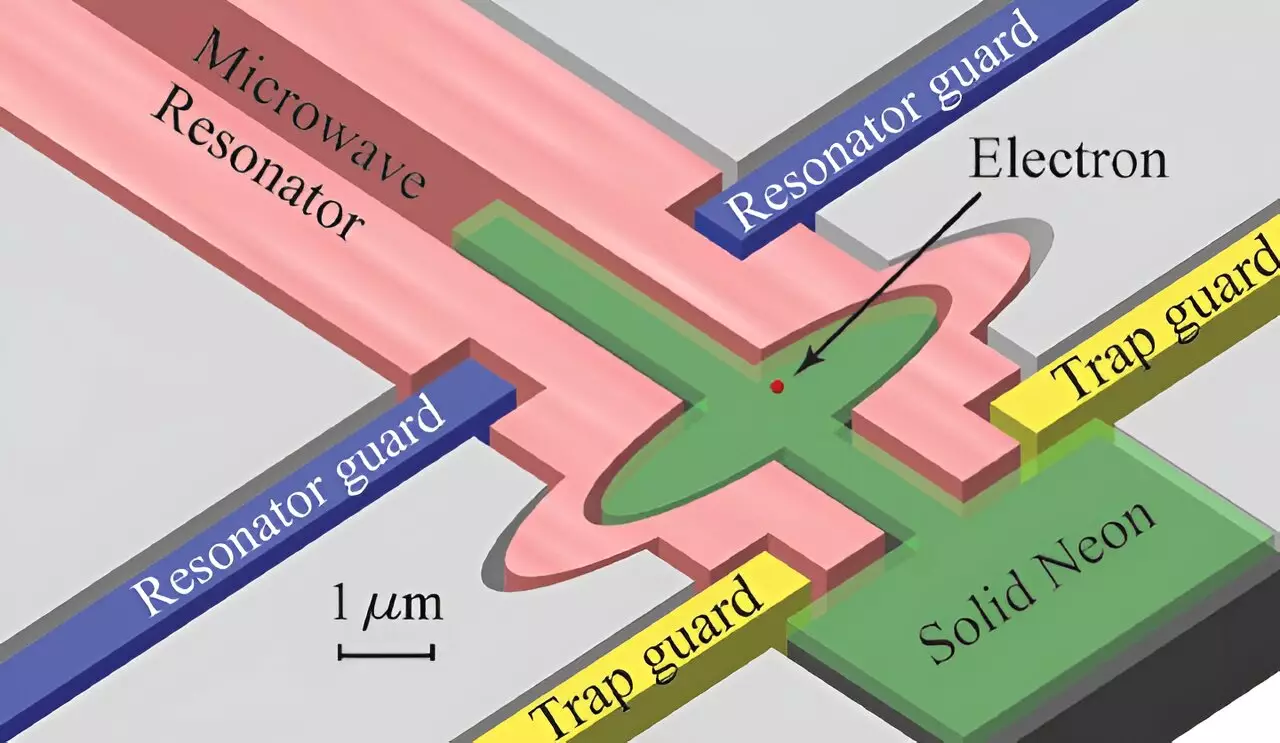Quantum computers have the potential to revolutionize the world of computing by performing calculations that would take classical computers years to resolve. The key to developing an effective quantum computer lies in having a reliable quantum bit, or qubit, that can exist in a simultaneous 0 or 1 state for an extended period, known as its coherence time.
One promising approach to achieving this is by trapping a single electron on a solid neon surface, creating what is known as an electron-on-solid-neon qubit. A recent study led by FAMU-FSU College of Engineering Professor Wei Guo has shed new light on the quantum state that characterizes the condition of electrons on such a qubit, providing valuable information for engineers looking to build this cutting-edge technology.
Guo’s research team discovered that small bumps on the solid neon surface naturally bind electrons, generating ring-shaped quantum states of these electrons. This quantum state encompasses various properties of an electron, such as its position and momentum, before any measurements are taken. Interestingly, when the bumps reach a specific size, the electron’s transition energy aligns with the energy of microwave photons, enabling controlled manipulation of the electron essential for quantum computing purposes.
Previous work by Guo and his collaborators demonstrated the viability of a solid-state single-electron qubit platform using electrons trapped on solid neon. This research showcased significant advancements in coherence times, reaching up to 0.1 milliseconds, which is a hundred times longer than typical coherence times for conventional semiconductor-based and superconductor-based qubits.
One of the critical aspects contributing to the extended coherence time of the electron-on-solid-neon qubit is the inertness and purity of solid neon. This qubit system also overcomes the issue of liquid surface vibrations that are present in the more commonly studied electron-on-liquid-helium qubit. By optimizing the design of the qubits to have smooth surfaces with appropriately sized bumps in strategic locations, researchers aim to enhance the trapping efficiency of electrons.
As Guo pointed out, further research is essential to understand how various conditions impact the manufacturing process of neon qubits. Factors such as neon injection temperatures and pressure play a crucial role in determining the final qubit product. By gaining better control over these processes, researchers can improve the precision of qubit construction and bring us closer to the realization of quantum computing capabilities that can tackle currently unsolvable problems.
The advancements in electron-on-solid-neon qubits represent a significant step forward in the field of quantum computing. With continued research and development, the potential for these innovative technologies to revolutionize computing as we know it becomes increasingly promising. The insights gained from studies like the one led by Wei Guo pave the way for a future where quantum computers can tackle complex problems that are beyond the reach of classical computing systems.


Leave a Reply